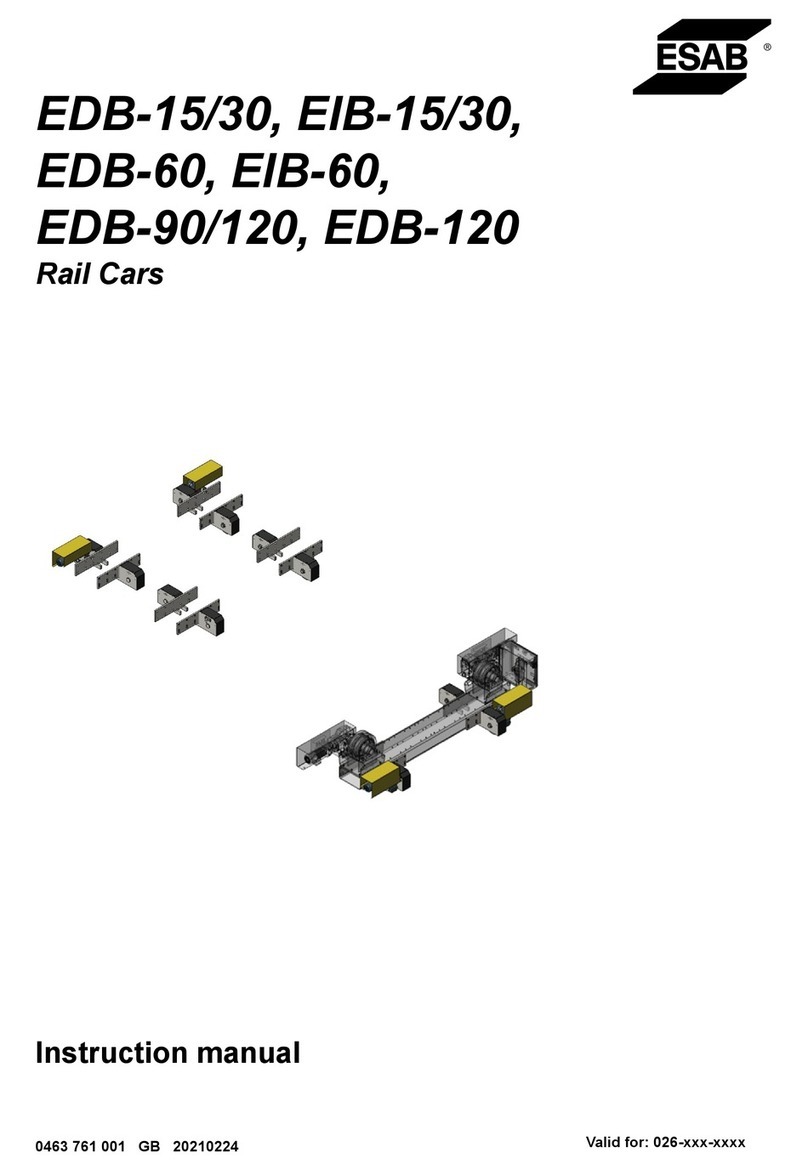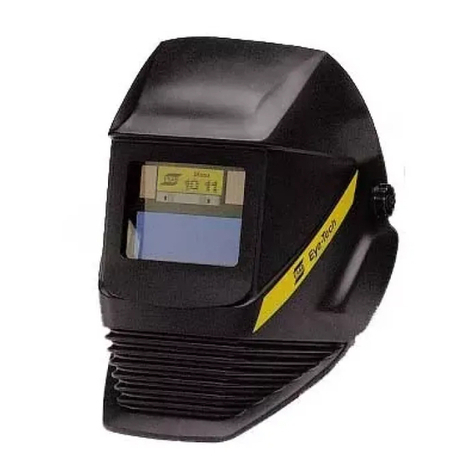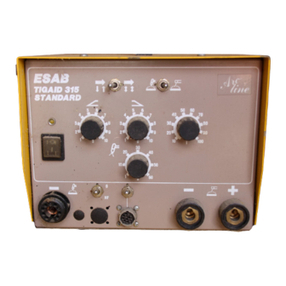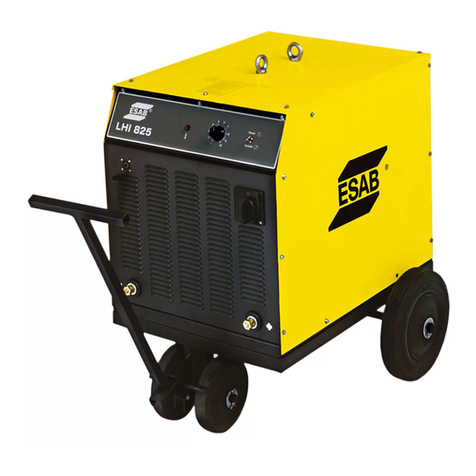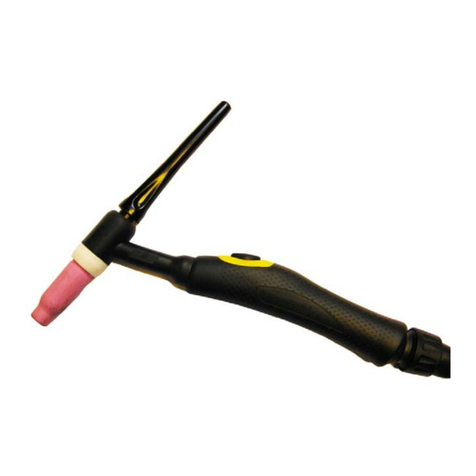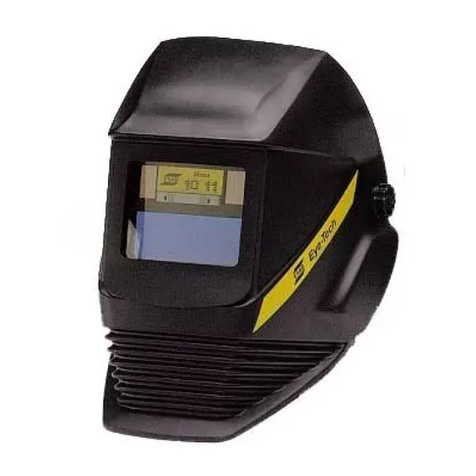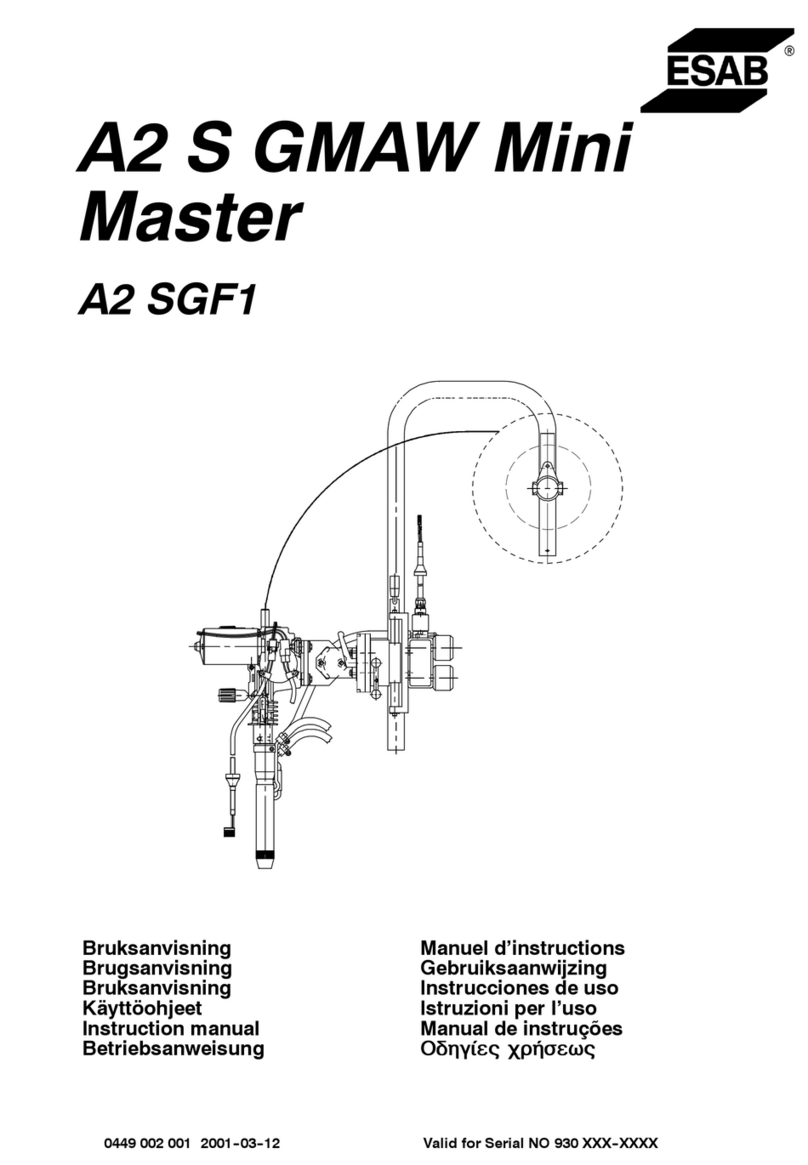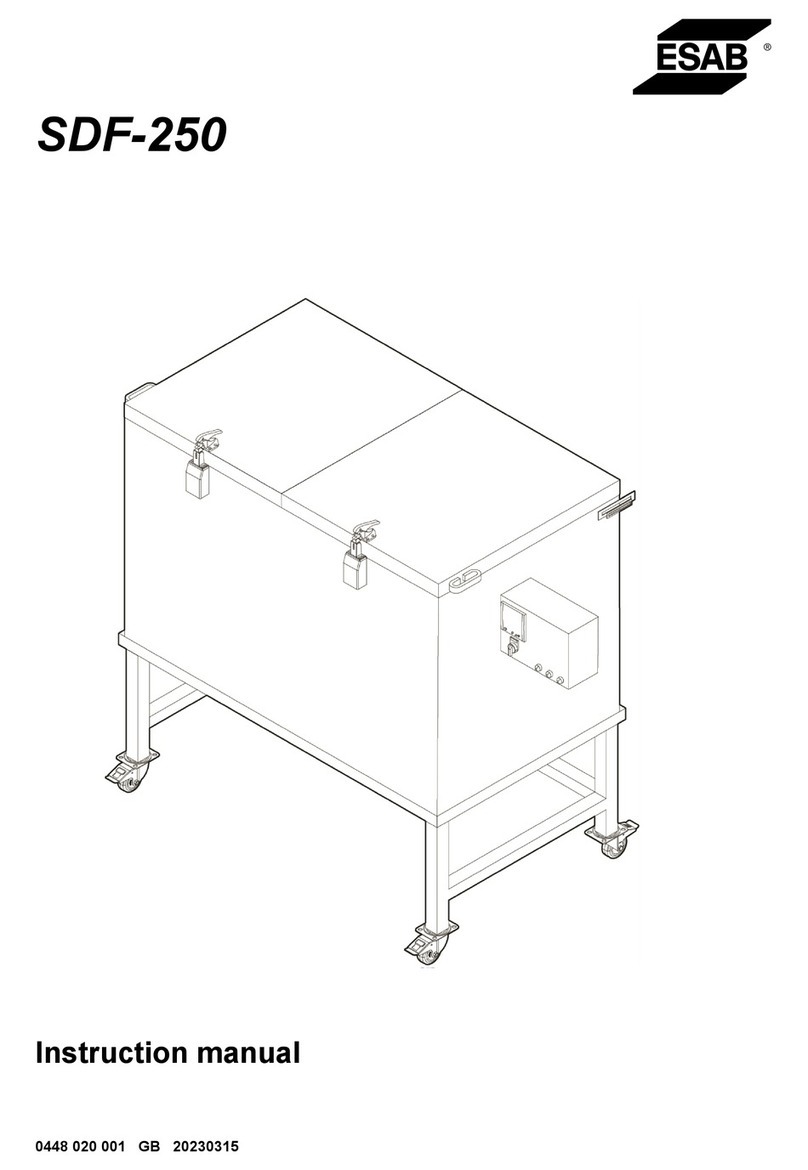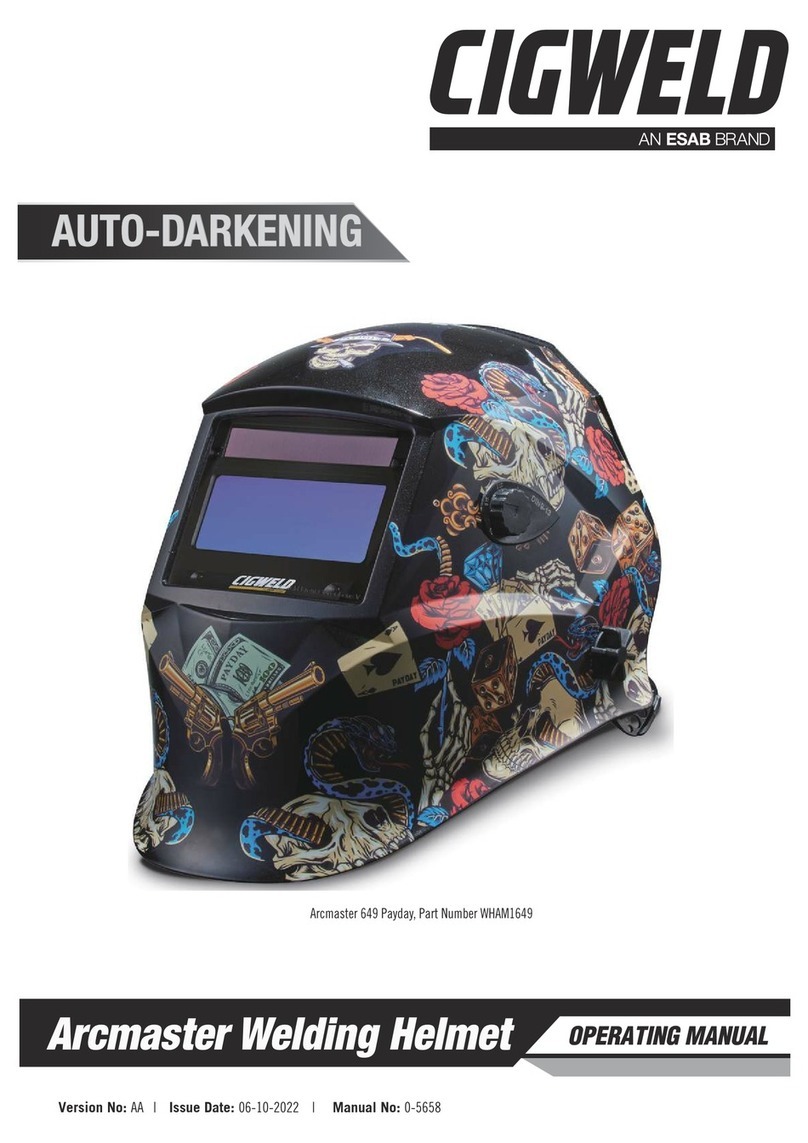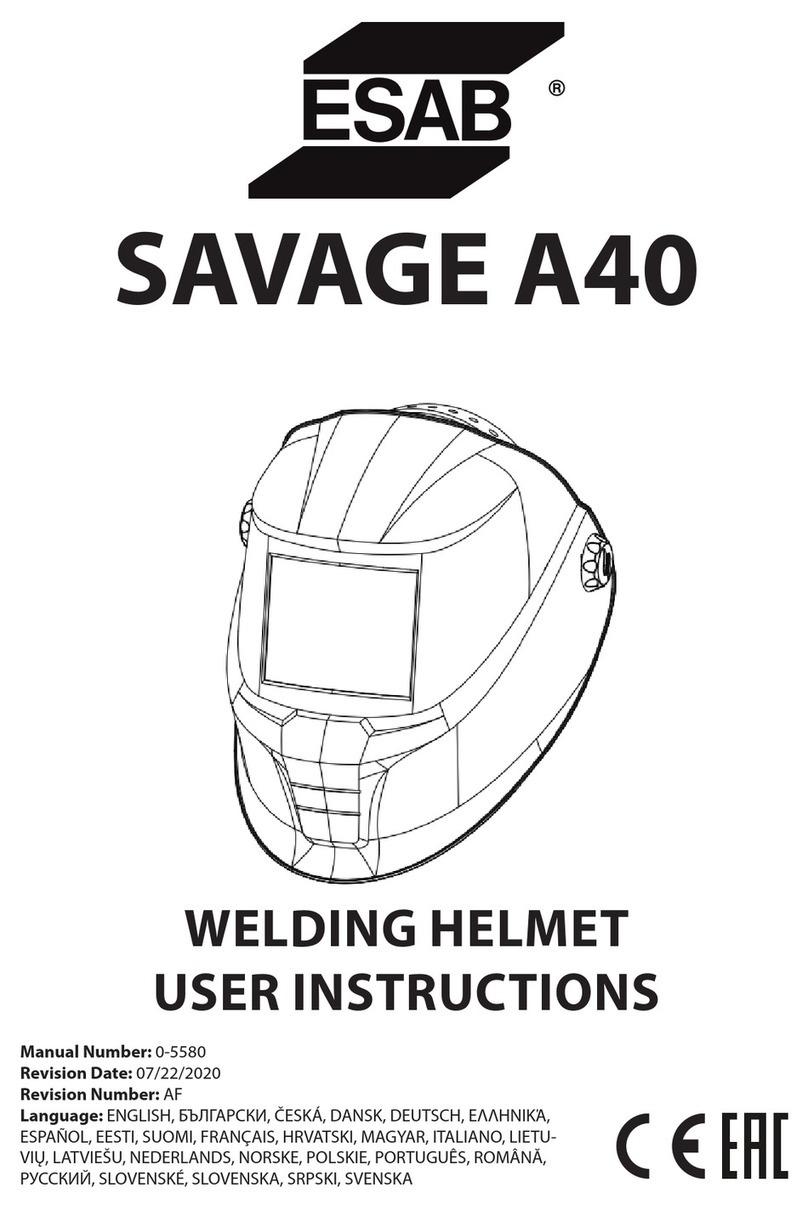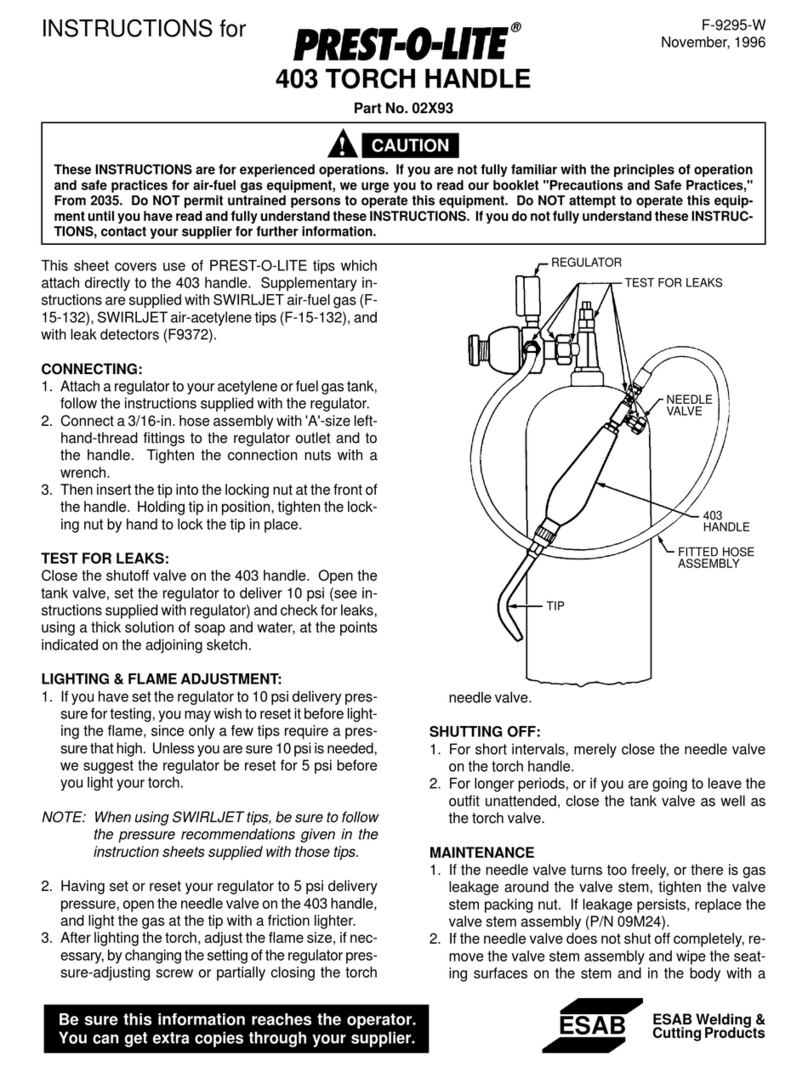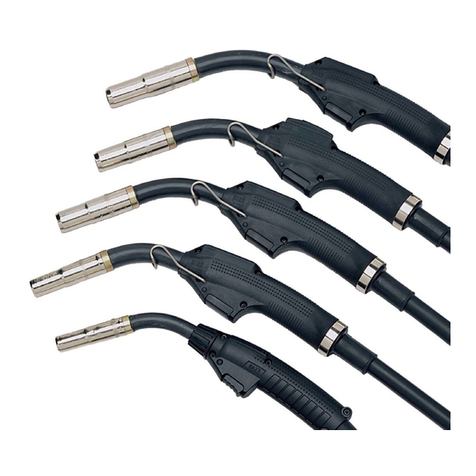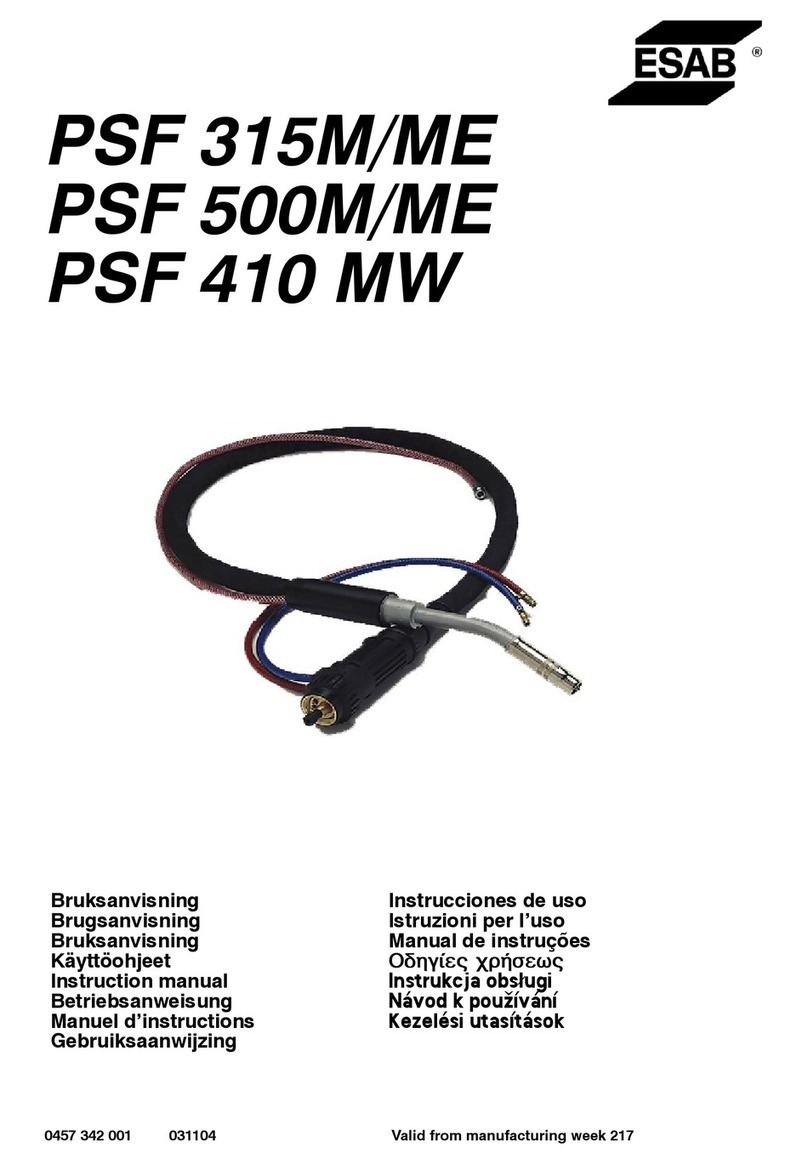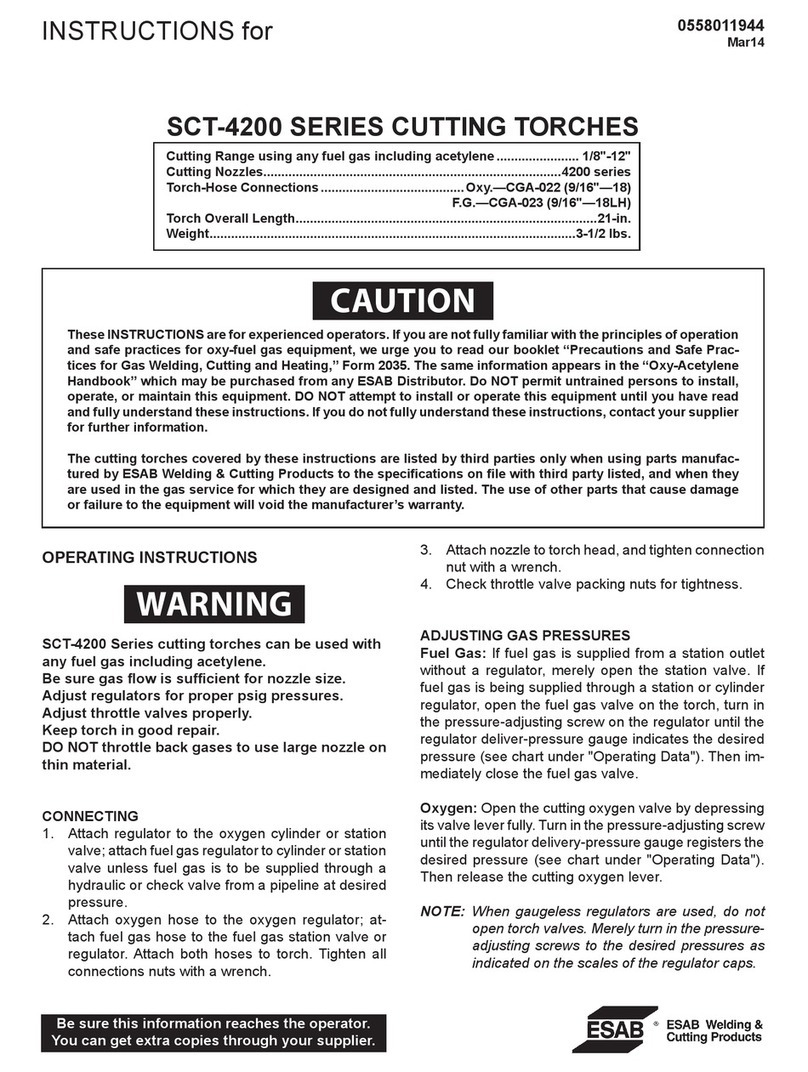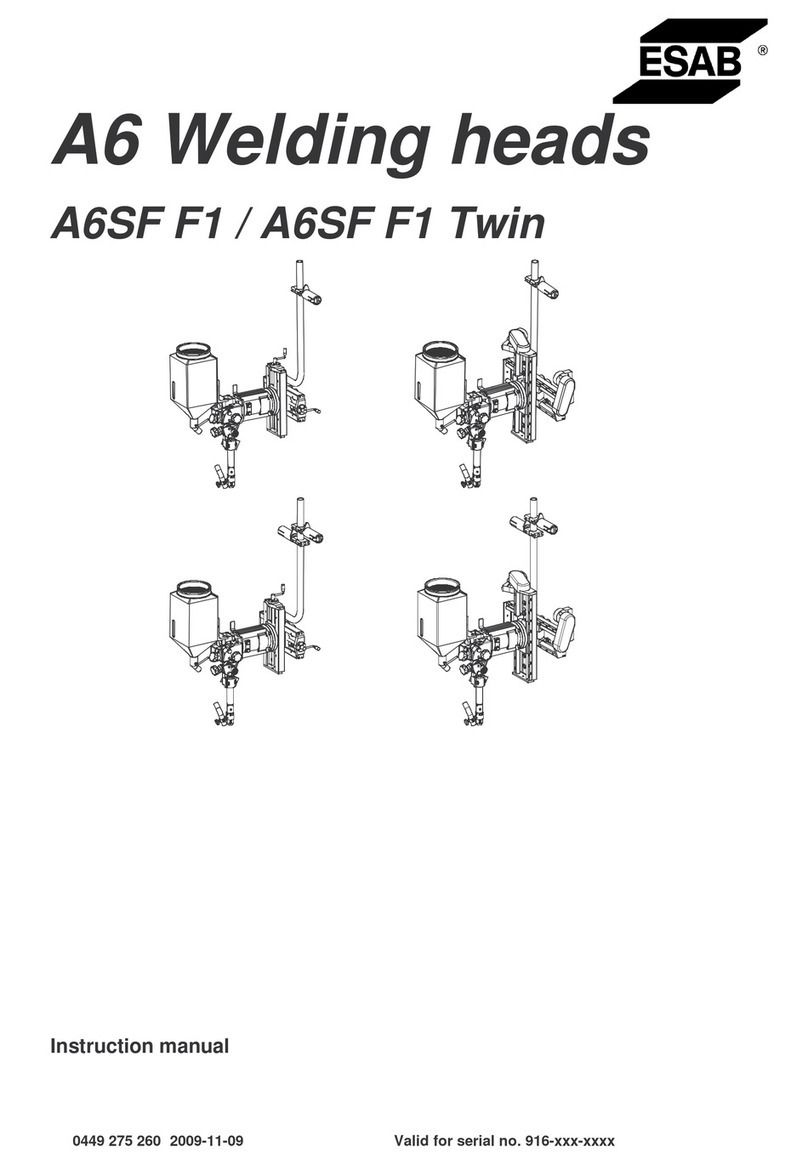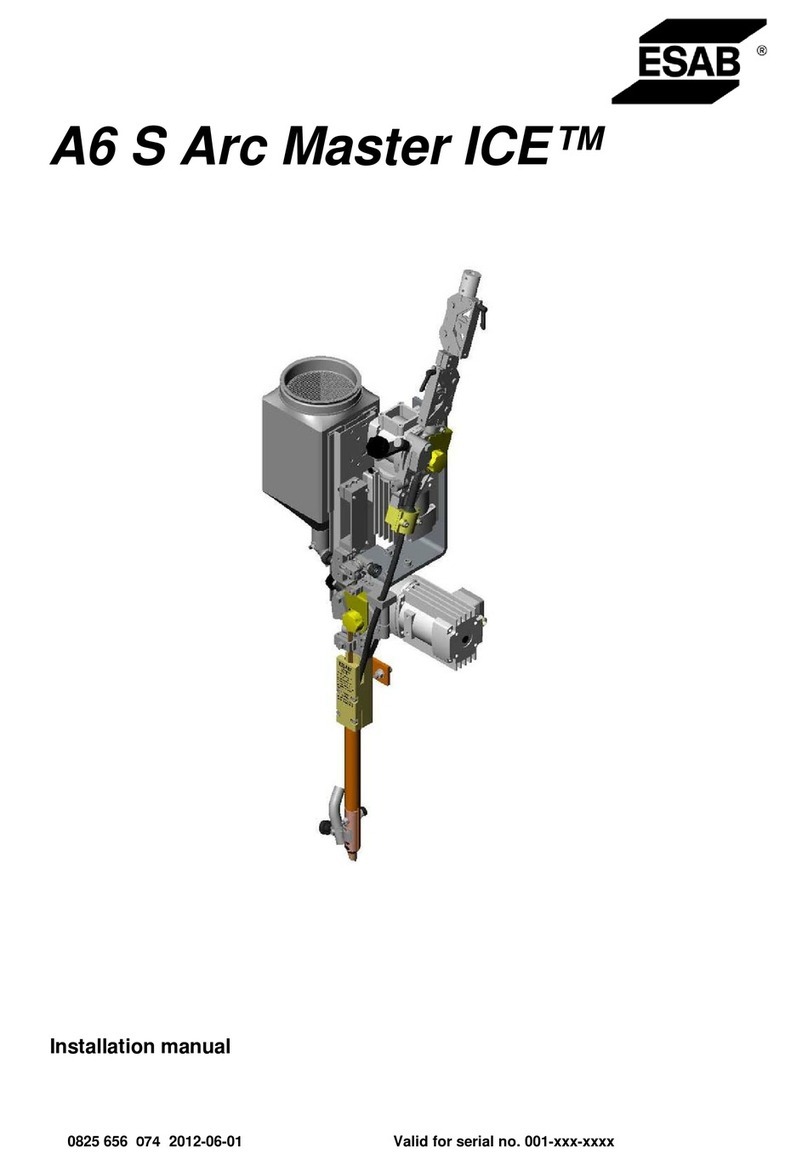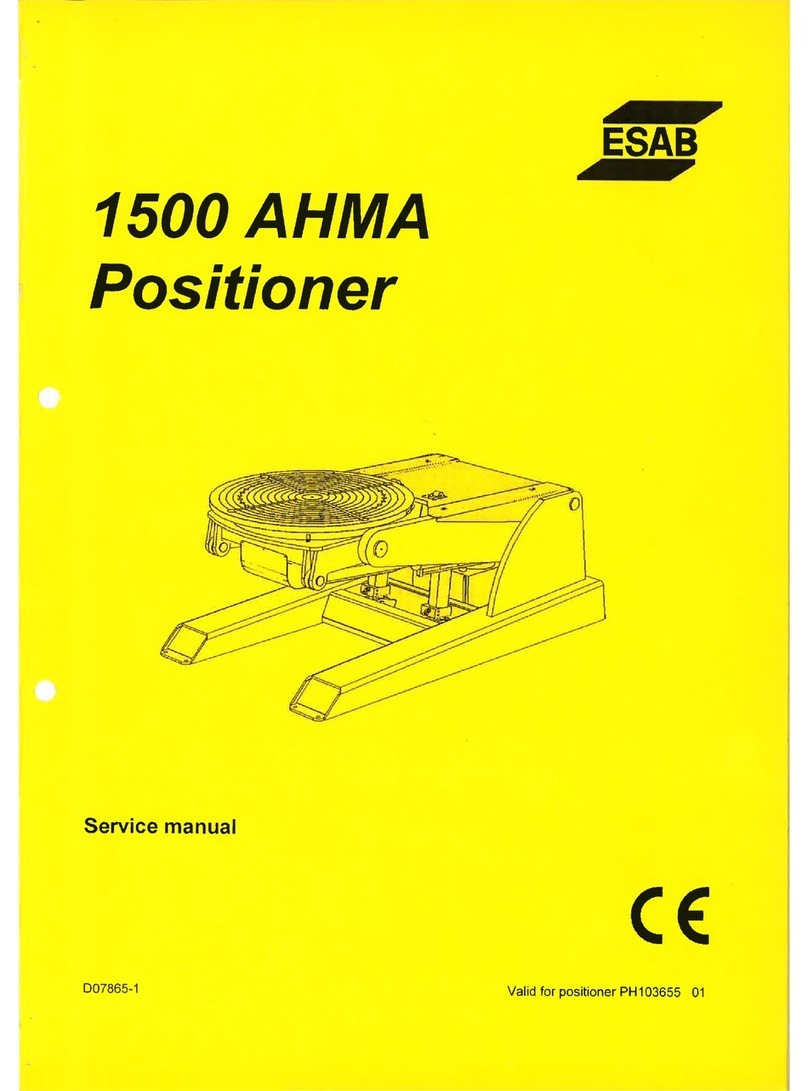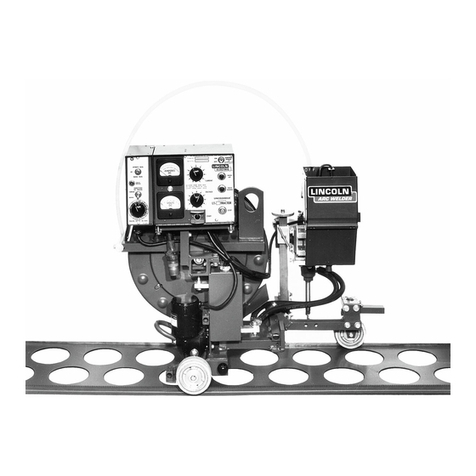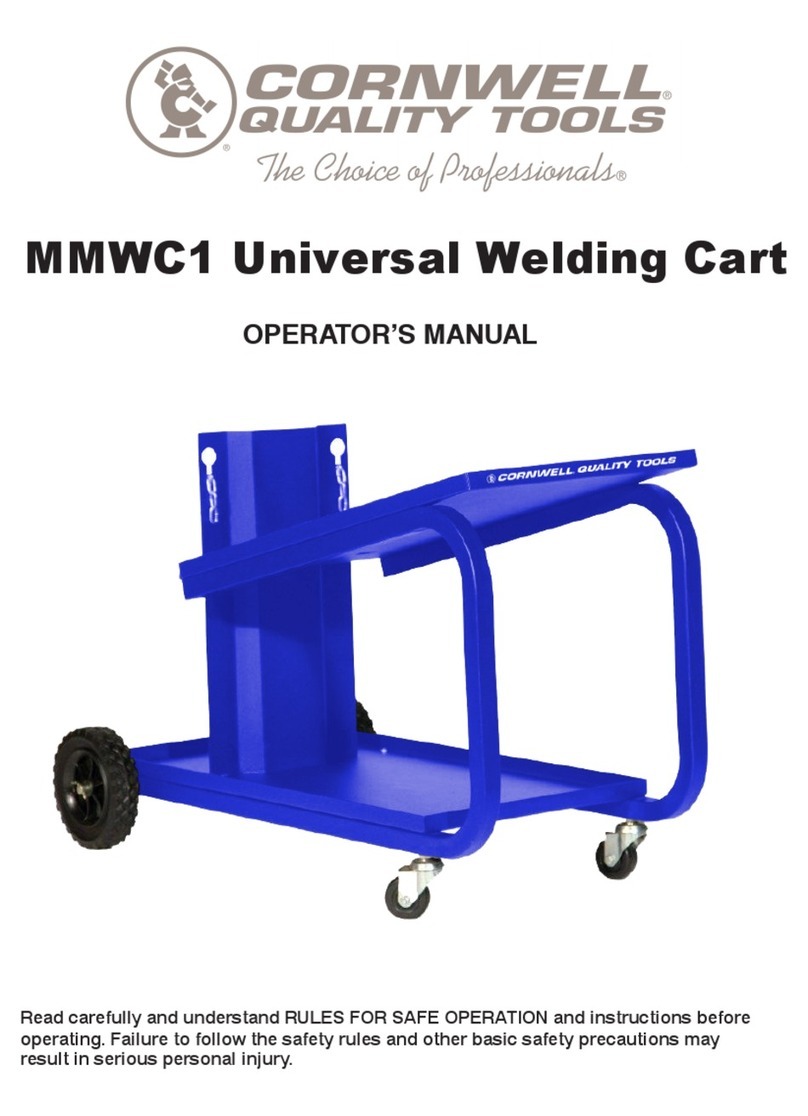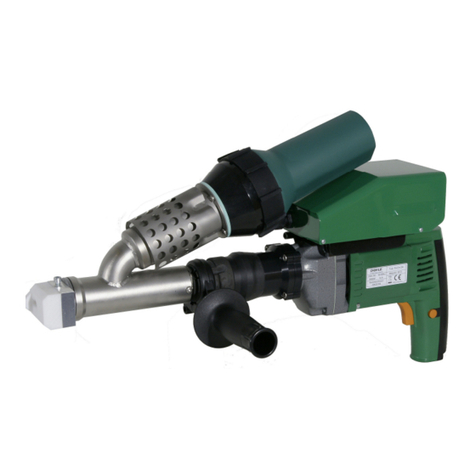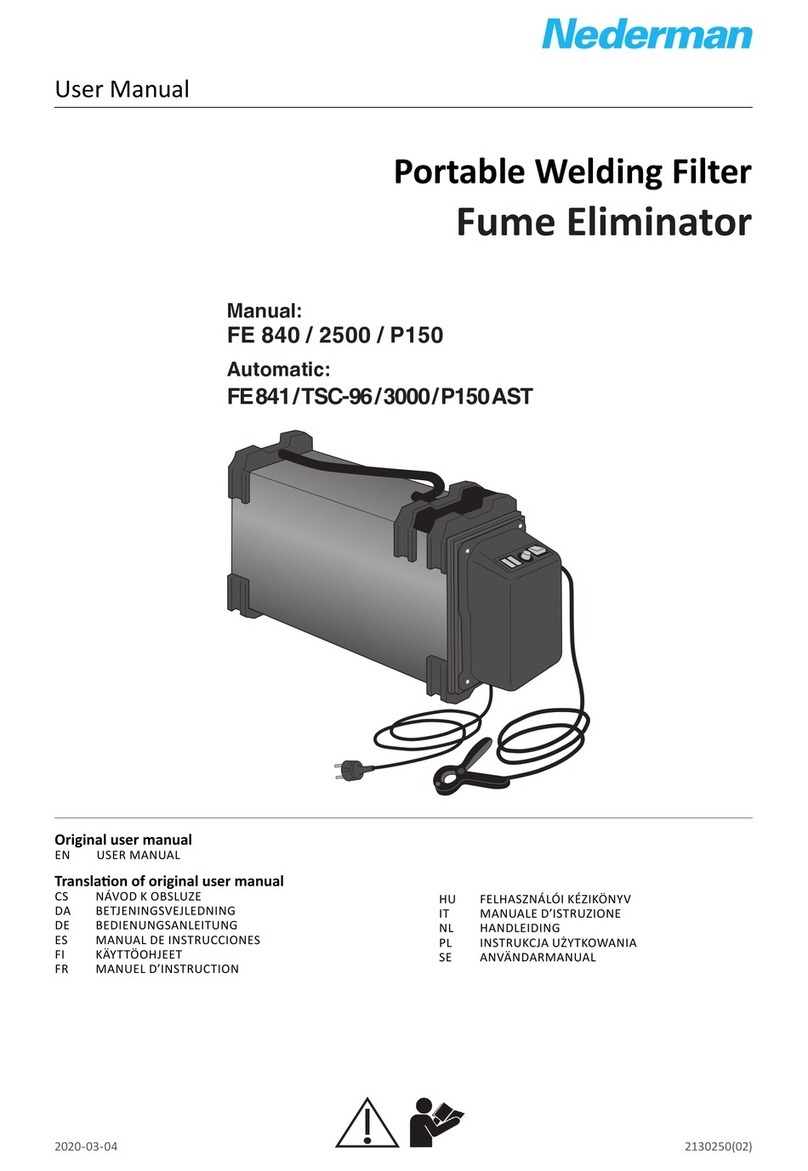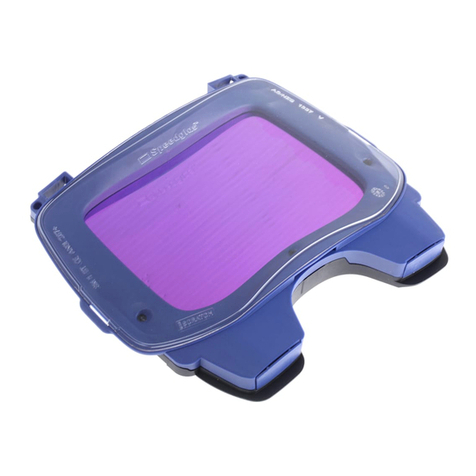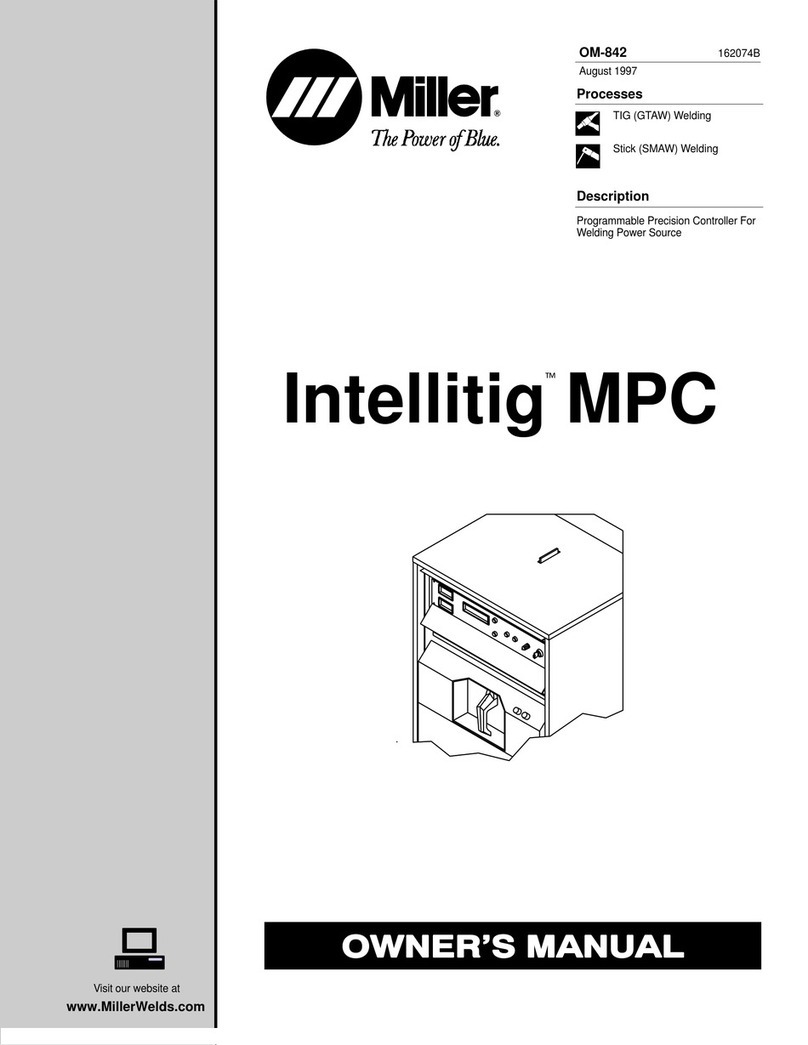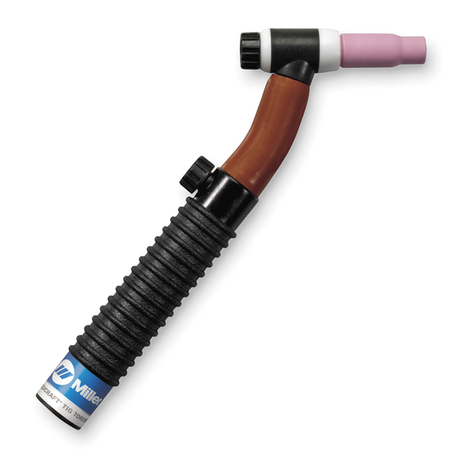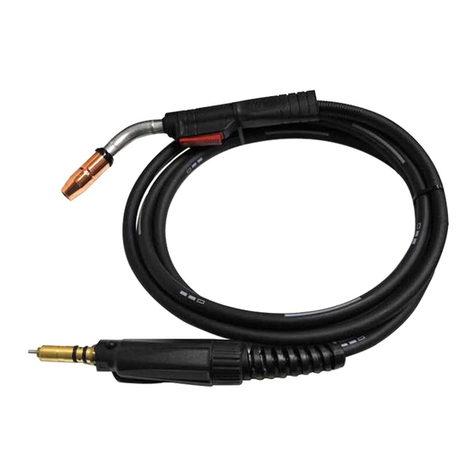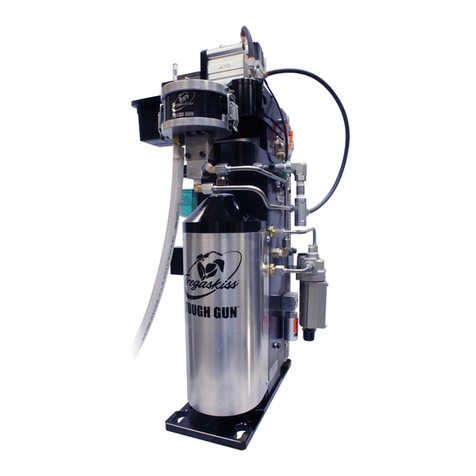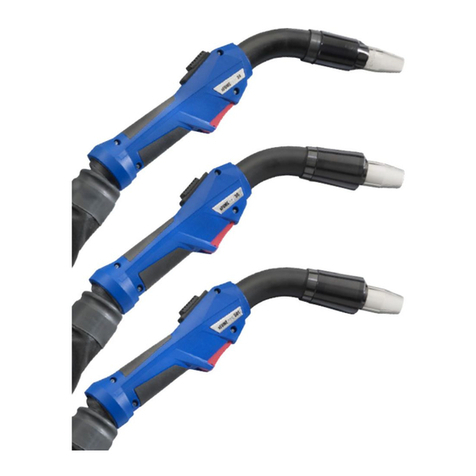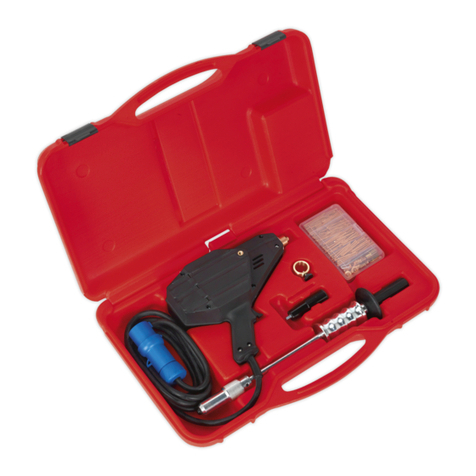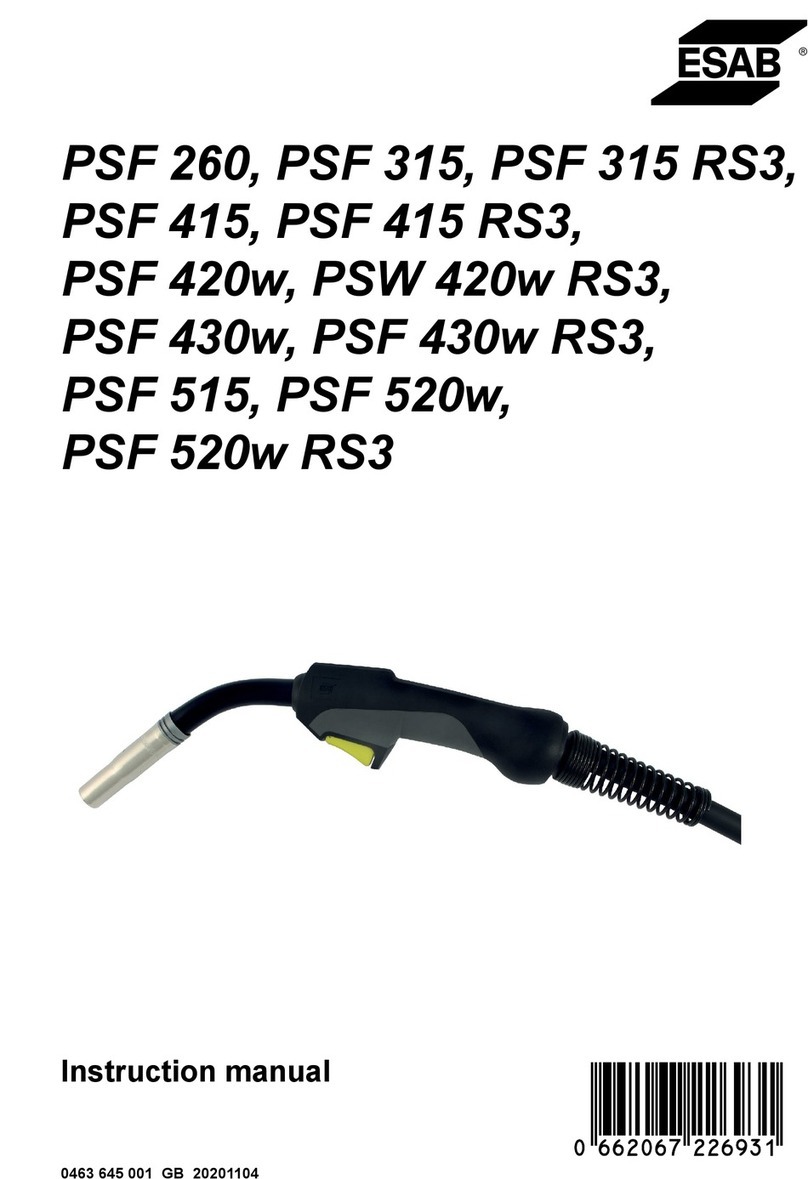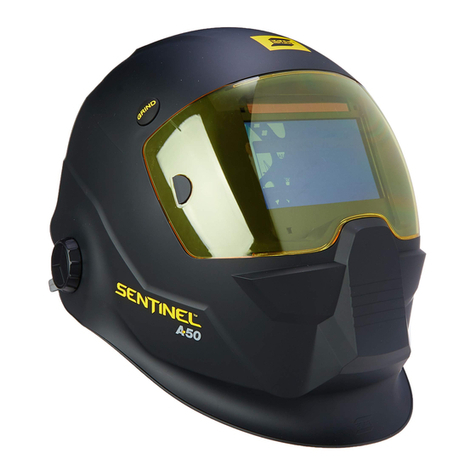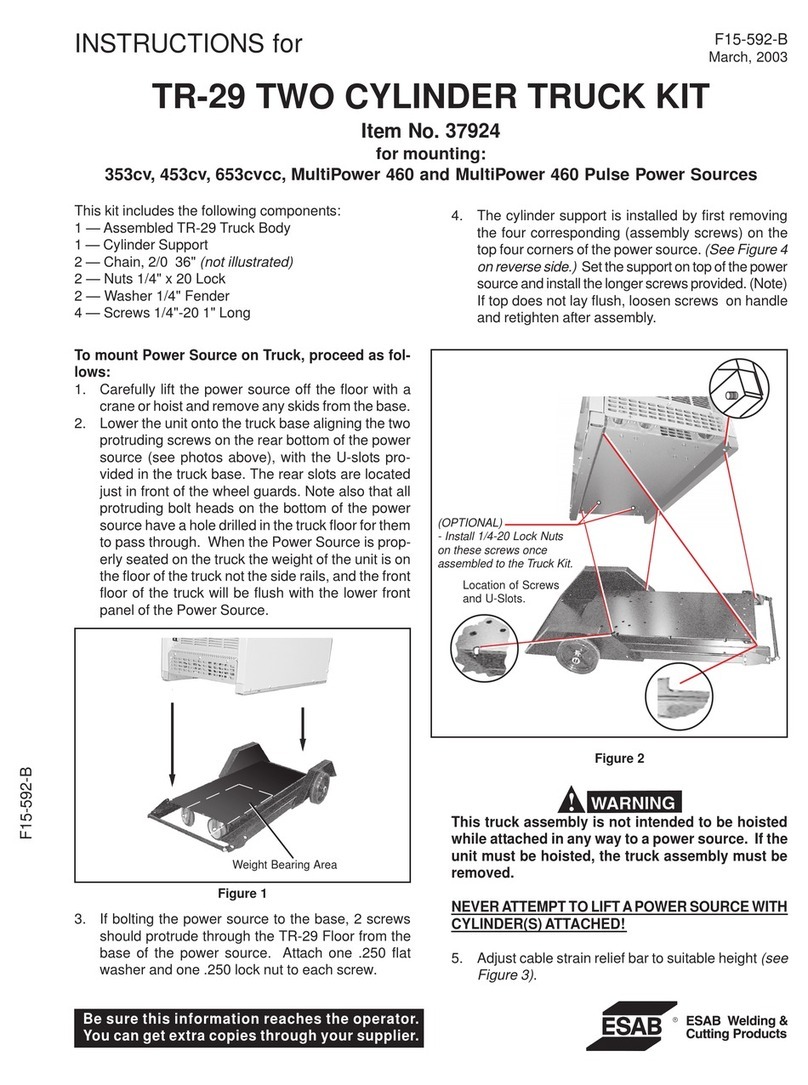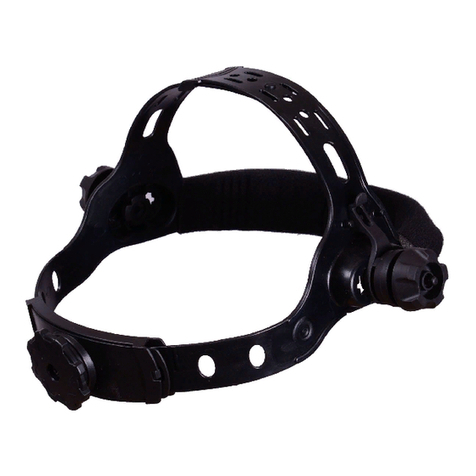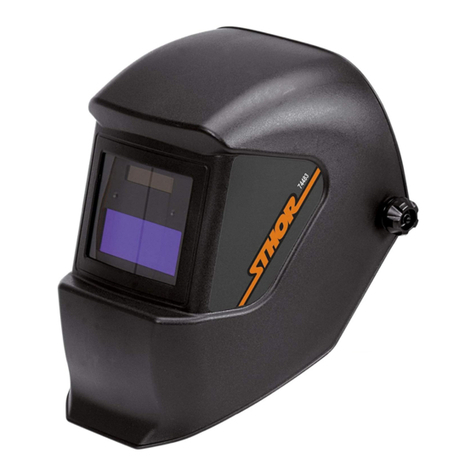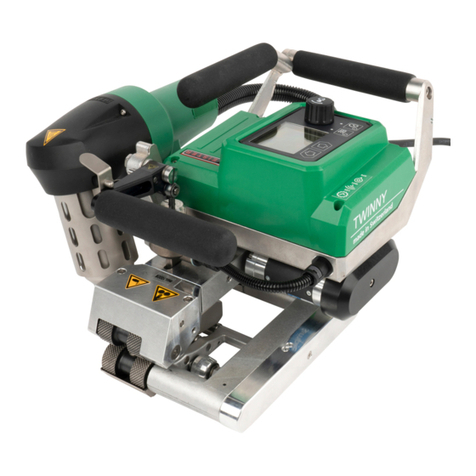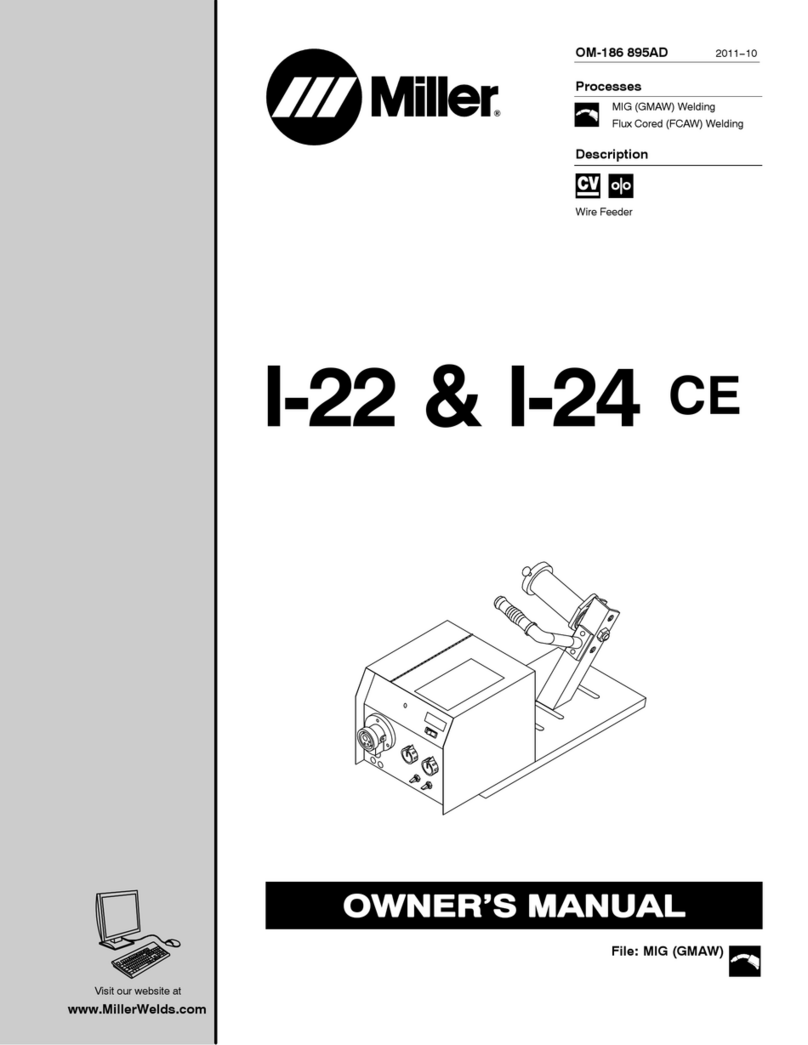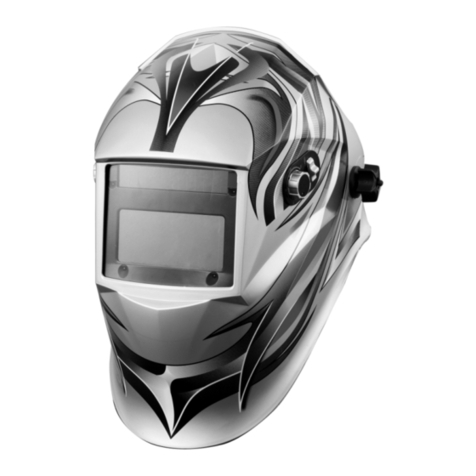
5
tibles du secteur où lon exécute des soudures ou des
coupes à larc, à moins de les recouvrir complètement
dune bâche non-inflammable. Ce type de matériaux
comprend notamment le bois, les vêtements, la sciure,
lessence, le kérosène, les peintures, les solvants, le
gaz naturel, lacétylène, le propane et autres sub-
stances combustibles semblables.
b. Les étincelles ou les projections de métal incandes-
cent peuvent tomber dans des fissures du plancher ou
dans des ouvertures des murs et y déclencher une
ignition lente cachée. Veiller à protéger ces ouvertures
des étincelles et des projections de métal.
c. Nexécutez pas de soudures, de coupes, dopérations
de gougeage ou autres travaux à chaud à la surface
de barils, bidons, réservoirs ou autres contenants
usagés, avant de les avoir nettoyés de toute trace de
substance susceptible de produire des vapeurs
inflammables ou toxiques.
d. En vue dassurer la prévention des incendies, il
convient de disposer dun matériel dextinction prêt à
servir immédiatement, tel quun tuyau darrosage, un
seau à eau, un seau de sable ou un extincteur portatif.
e. Une fois le travail à larc terminé, inspectez le secteur
de façon à vous assurer quaucune étincelle ou projec-
tion de métal incandescent ne risque de provoquer
ultérieurement un feu.
3. CHOC ÉLECTRIQUE-- Le gougeage à larc et à larc
au plasma exige lemploi de tensions à vide relativement
importantes; or, celles-ci risquent de causer des
dommages corporels graves et même mortels en cas
dutilisation inadéquate. La gravité du choc électrique
reçu dépend du chemin suivi par le courant à travers le
corps humain et de son intensité.
a. Ne laissez jamais de surfaces métalliques sous ten-
sion venir au contact direct de la peau ou de vêtements
humides. Veillez à porter des gants bien secs.
b. Si vous devez effectuer un travail sur une surface
métallique ou dans un secteur humide, veillez à assu-
rer votre isolation corporelle en portant des gants secs
et des chaussures à semelles de caoutchouc et en
vous tenant sur une planche ou une plate-forme
sèche.
c. Mettez toujours à la terre le poste de soudage/coupage
en le reliant par un câble à une bonne prise de terre.
d. Nutilisez jamais de câbles usés ou endommagés. Ne
surchargez jamais le câble. Utilisez toujours un
équipement correctement entretenu.
e. Mettez léquipement hors tension lorsquil nest pas en
service. une mise à la masse accidentelle peut en effet
provoquer une surchauffe de léquipement et un dan-
ger dincendie. Ne pas enrouler ou passer le câble
autour dune partie quelconque du corps.
f. Vérifiez si le câble de masse est bien relié à la pièce en
un point aussi proche que possible de la zone de
travail. Le branchement des câbles de masse à
lossature du bâtiment ou en un point éloigné de la
zone de travail augmente en effet le risque de pas-
sage dun courant de sortie par des chaînes de
PRÉCAUTIONS DE SÉCURITÉ
AVERTISSEMENT: Ces règles de sécurité ont pour objet
d assurer votre protection. Veillez à lire et à observer les
précautions énoncées ci-dessous avant de monter l
équipement ou de commercer à lutiliser. Tout défaut
dobservation de ces précautions risque dentraîner des
blessures graves ou mortelles.
1. PROTECTION INDIVIDUELLE-- Les brûlures de la
peau et des yeux dues au rayonnement de larc
électrique ou du métal incandescent, lors du soudage
au plasma ou à lélectrode ou lors du gougeage à
larc, peuvent savérer plus graves que celles résultant
dune exposition prolongée au soleil. Aussi convient-il
dobserver les précautions suivantes:
a. Portez un écran facial adéquat muni des plaques
protectrices et des verres filtrants appropriés afin de
vous protéger les yeux, le visage, le cou et les oreilles
des étincelles et du rayonnement de larc électrique
lorsque vous effectuez des soudures ou des coupes
ou lorsque vous en observez lexécution.
AVERTISSEZ les personnes se trouvant à proximité
de façon à ce quelles ne regardent pas larc et à ce
quelles ne sexposent pas à son rayonnement, ni à
celui du métal incandescent.
b. Portez des gants ignifugés à crispins, une tunique
épaisse à manches longues, des pantalons sans
rebord, des chaussures à embout dacier et un casque
de soudage ou une calotte de protection, afin déviter
dexposer la peau au rayonnement de larc électrique
ou du métal incandescent. ll est également souhaitable
dutiliser un tablier ininflammable de façon à se
protéger des étincelles et du rayonnement thermique.
c. Les étincelles ou les projections de métal incandes-
cent risquent de se loger dans des manches
retroussées, des bords relevés de pantalons ou dans
des poches. Aussi convient-il de garder boutonnés le
col et les manches et de porter des vêtements sans
poches à lavant.
d. Protégez des étincelles et du rayonnement de larc
électrique les autres personnes travaillant à proximité
à laide dun écran ininflammable adéquat.
e. Ne jamais omettre de porter des lunettes de sécurité
lorsque vous vous trouvez dans un secteur où lon
effectue des opérations de soudage ou de coupage à
larc. Utilisez des lunettes de sécurité à écrans ou
verres latéraux pour piquer ou meûler le laitier. Les
piquetures incandescentes de laitier peuvent être
projetées à des distances considérables. Les
personnes se trouvant à proximité doivent également
porter des lunettes de protection.
f. Le gougeage à larc et le soudage à larc au plasma
produisent un niveau de bruit extrêmement élevé (de
100 à 114 dB) et exigent par conséquent lemploi de
dispositifs appropriés de protection auditive.
2. PRÉVENTION DES INCENDES-- Les projections de
laitier incandescent ou détincelles peuvent provoquer
de graves incendies au contact de matériaux com-
bustibles solides, liquides ou gazeux. Aussi faut-il
observer les précautions suivantes:
a. Éloigner suffisamment tous les matériaux combus-
9/97
